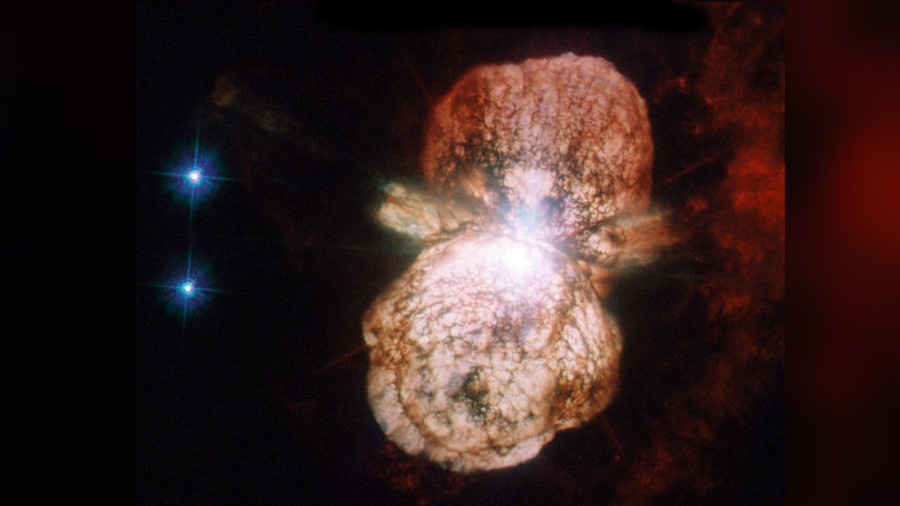A star system containing two gigantic suns is blasting cosmic rays into space and NASA scientists have found that the radiation is making its way towards Earth on intergalactic winds. High-energy observations in the sprawling southern constellation of Carina had puzzled scientists for some time. But now a NASA orbital telescope has helped pin the energy source on Eta Carinae, a double-star system around 7,500 light years away from Earth.

It is already known that rays with energies greater than 1 billion electron volts are sprayed into our solar system. However, the erratic movement of the energy and sheer size of the great expanse previously made it difficult to locate some of the sources. Colliding stellar winds within Eta Carinae, which is surrounded by an hourglass dust nebula, have now been confirmed as a reason for the energy patterns in the region.
“We know the blast waves of exploded stars can accelerate cosmic rays to speeds comparable to that of light, an incredible energy boost,” said NASA astrophysicist Kenji Hamaguchi. “Similar processes must occur in other extreme environments. Our analysis indicates Eta Carinae is one of them.”
Using the NuStar telescope, NASA was able to collect data on violent shock waves from colliding winds that result in cosmic rays, some of which have been seen to bounce off the Earth’s magnetic field.
“We’ve known for some time that the region around Eta Carinae is the source of energetic emission in high-energy X-rays and gamma rays,” said Fiona Harrison, NuSTAR telescope researcher. “But until NuSTAR was able to pinpoint the radiation… the origin was mysterious.”
Launched in 2012, the NuStar orbiter has been used to map selected regions of space and act as a census for collapsed stars. The telescope has also been tasked with investigating mysterious black holes, and last year documented the ‘energy eating’ phenomena in the Milky Way.
Follow us: Facebook and Twitter
NASA’s NuSTAR Mission Proves Superstar Eta Carinae Shoots Cosmic Rays












[…] (Fonte) […]